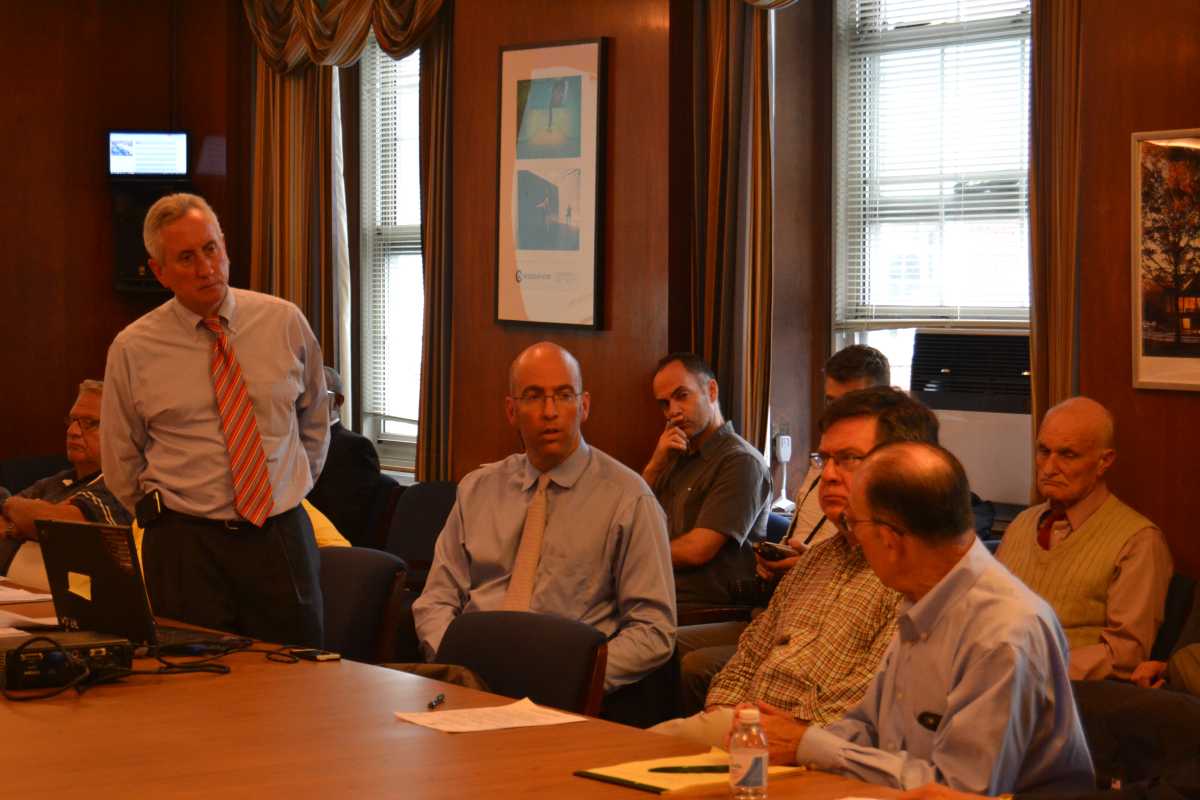Representatives from the Port Authority of New York and New Jersey (PANYNJ) gave a presentation on the Part 150 Airport Noise Compatibility Studies for LaGuardia (LGA) and John F. Kennedy International (JFK) airports during Monday’s meeting of the Queens Borough Board at Queens Borough Hall in Kew Gardens.
“Part 150 of the Federal Regulations enable airport operators to undertake studies that provide the public with information about existing and future non-compatible land uses around airports and to create measures that reduce and prevent the introduction of new non-compatible land uses,” explained Queens Borough President Melinda Katz.
This study will examine the levels of airplane noise around both LGA and JFK, create noise exposure maps (NEMs) for the areas and develop noise compatibility programs (NCPs) for impacted land uses within areas with levels of high noise.
“The Port Authority is conducting these two studies with the goal of finding potential mitigation measures to reduce levels of aircraft noise exposure that are deemed significant,” said Edward Knoesel, senior manager of environmental and noise programs for the Aviation Department at PANYNJ. “And that is the federal government that makes determination.”
The study aims to find how land is being used within high noise level areas around the airports. Certain land uses, such as a cargo factory, are acceptable in high noise level areas, while other land uses, such as residential buildings, should not be allowed there.
Information from all 2014 flight operations from the airports will be used to help create the NEMs, which will be presented to the Federal Aviation Administration (FAA) in 2016. FAA regulations also require PANYNJ to also present a map for a forecast of operations five years into the future.
The NEMs use a day-night average sound level (DNL) to figure out how much noise is concentrated over each area. Certain land uses within the DNL 65, which is a day-night average of 65 decibels, are considered incompatible.
Once the noise impacts are assessed, measures to reduce aircraft noise and limit its impact on surrounding areas, through noise abatement or noise mitigation, will be considered. Noise abatement reduces noise from the source, in this case airplanes, and noise mitigation helps bring down noise levels inside of the structures themselves, through possible soundproofing building materials.
These options, along with others, will be explored in the NCP section of the study.
“The noise compatibility planning explores operational, that means how to move the aircraft, land use and administrative measures to minimize aircraft noise exposure in that area,” Knoesel continued. “The FAA approves individual measures…they may approve some, they may disapprove others.”
The FAA has 180 days to review the proposed measures and either approve, disapprove or request more time to examine the measures.
Once measures are accepted, implementation will begin.
RECOMMENDED STORIES
- Crucial housing laws to expire as state legislature negotiations continue
- 5Pointz artists suing over whitewashing: report
- Celia Dosamantes, former Meng and Weprin aide, officially seeking City Council seat






































